For this lesson we are going to assume that we are subtracting the smaller number from the larger number, meaning the larger number is on top. Subtracting the larger number from the smaller would have a negative result, which we will cover in the integers lessons. Like addition, we work the columns right to left and subtract down the columns.
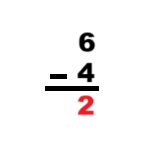
Unlike addition, instead of carrying the leading digit over to the next column, we may have to borrow from that column. For that reason, leave yourself a little room when you write out the problem.
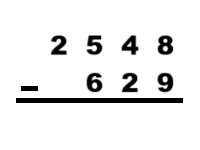
Because we can't subtract 9 from 8 we have to borrow from the next column. To do this we use the one-one rule. We subtract 1 from the next column by placing a 1 under the top digit of that column. We then place a 1 in front of the top digit of the column we are working. This method of borrowing is much cleaner than scribbling out the 4 and changing it to a 3.
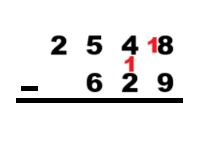
18 - 9 = 9. We write that underneath the same way we did in the addition lesson.
4 - 1 - 2 = 1; we don't have to borrow for this column.
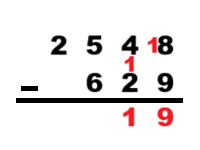
For the next column we need to borrow again. 15 - 6 = 9 and 2 - 1 = 1. Our final answer is 1919
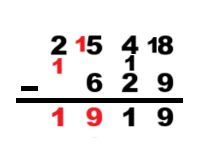
 admin@bdubedu.org
admin@bdubedu.org